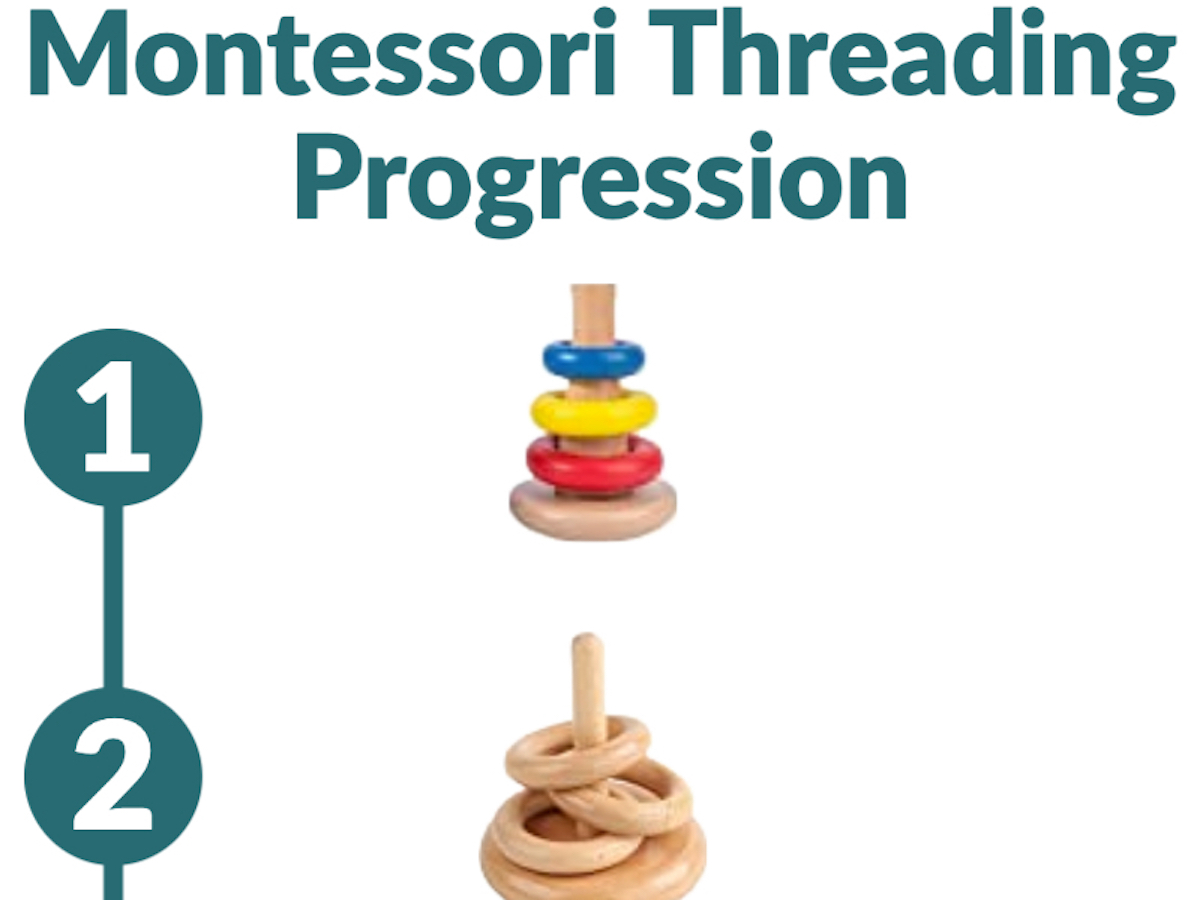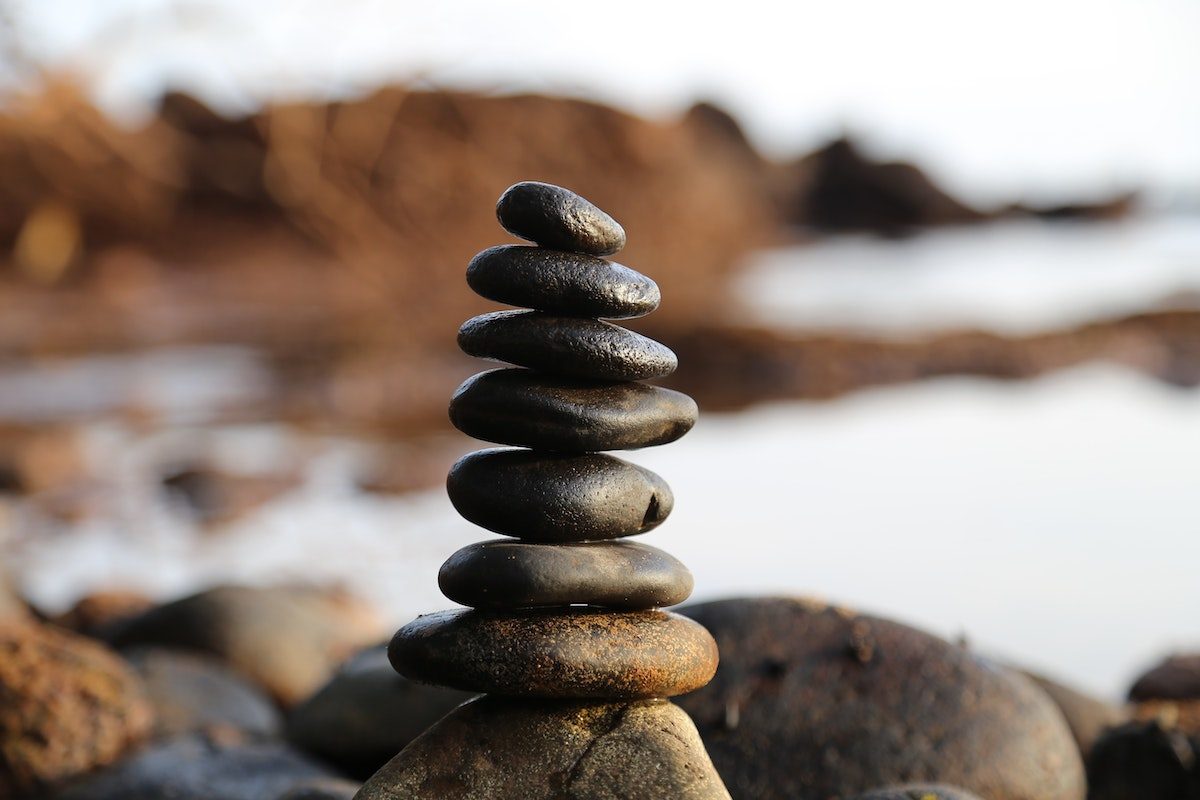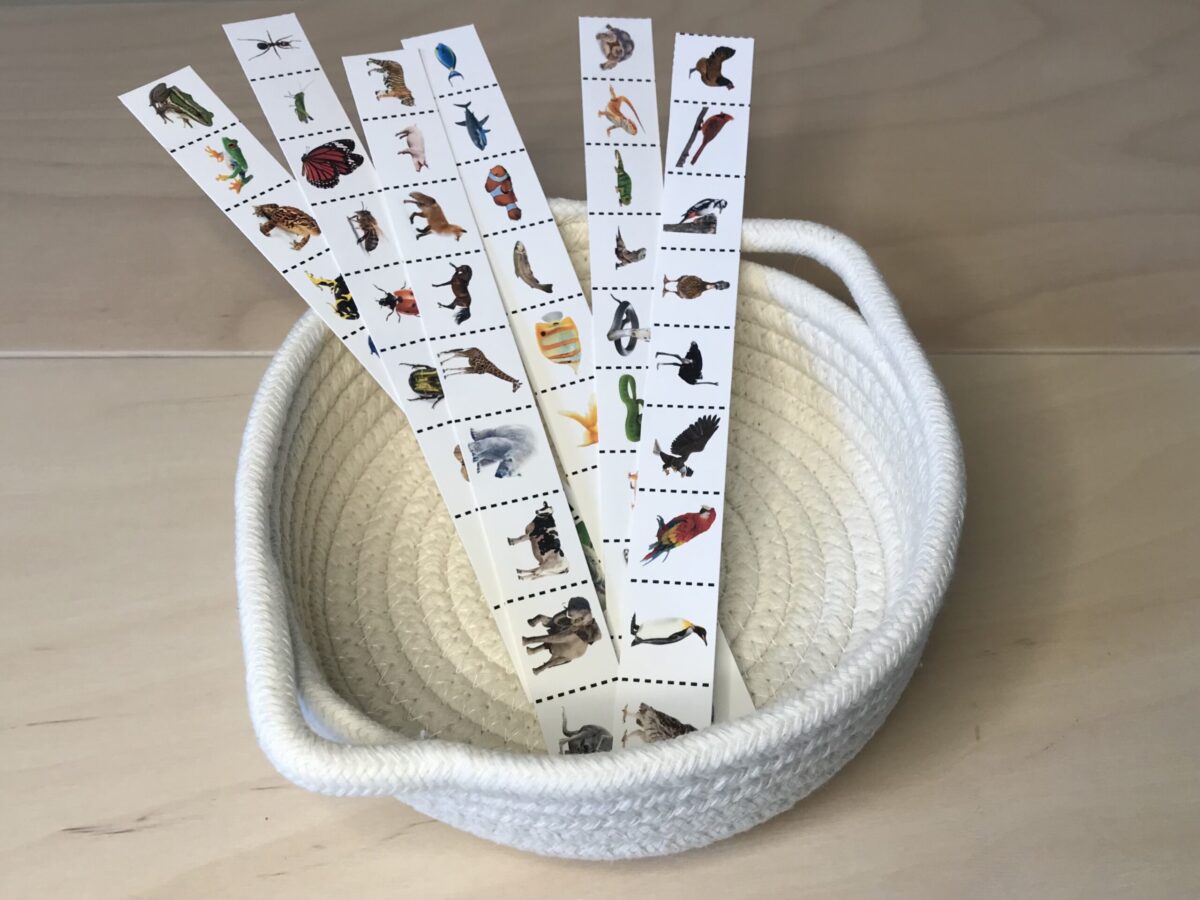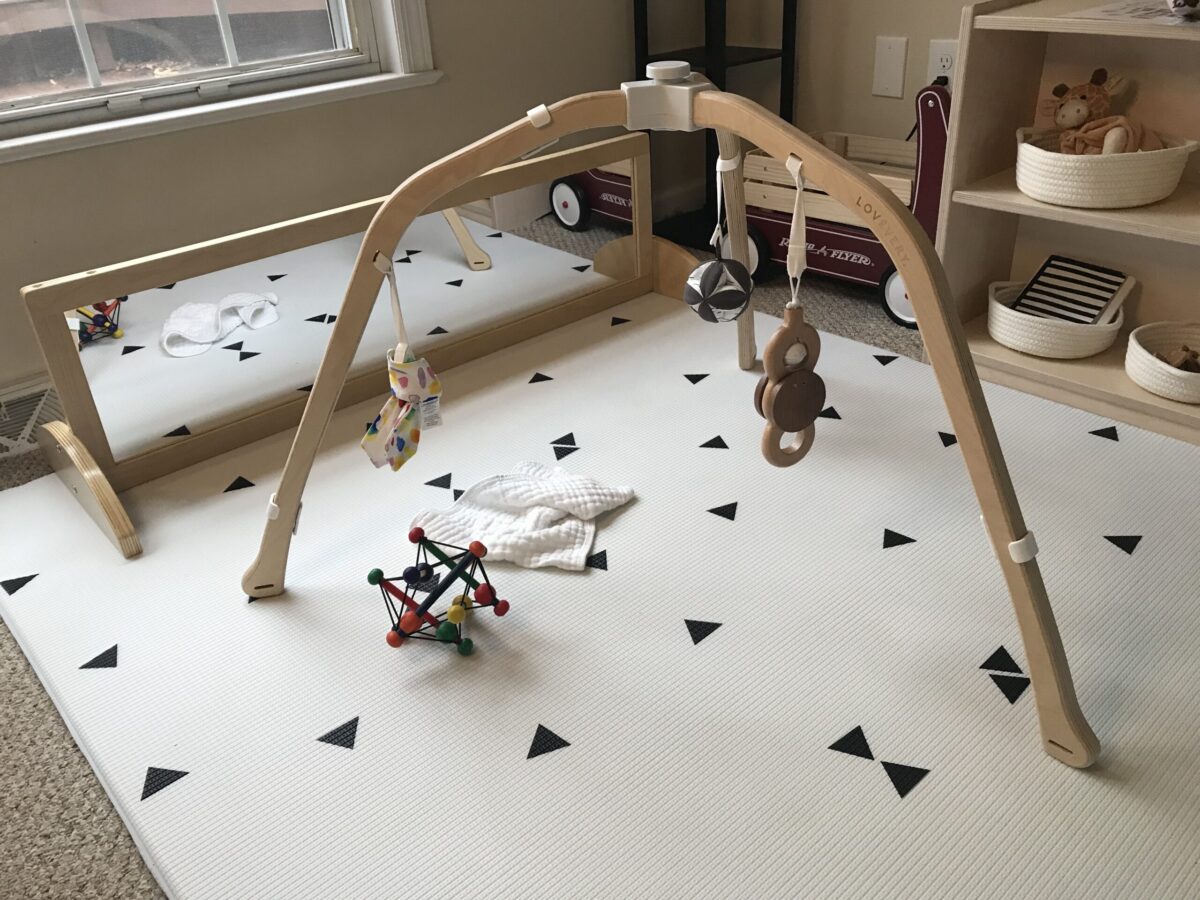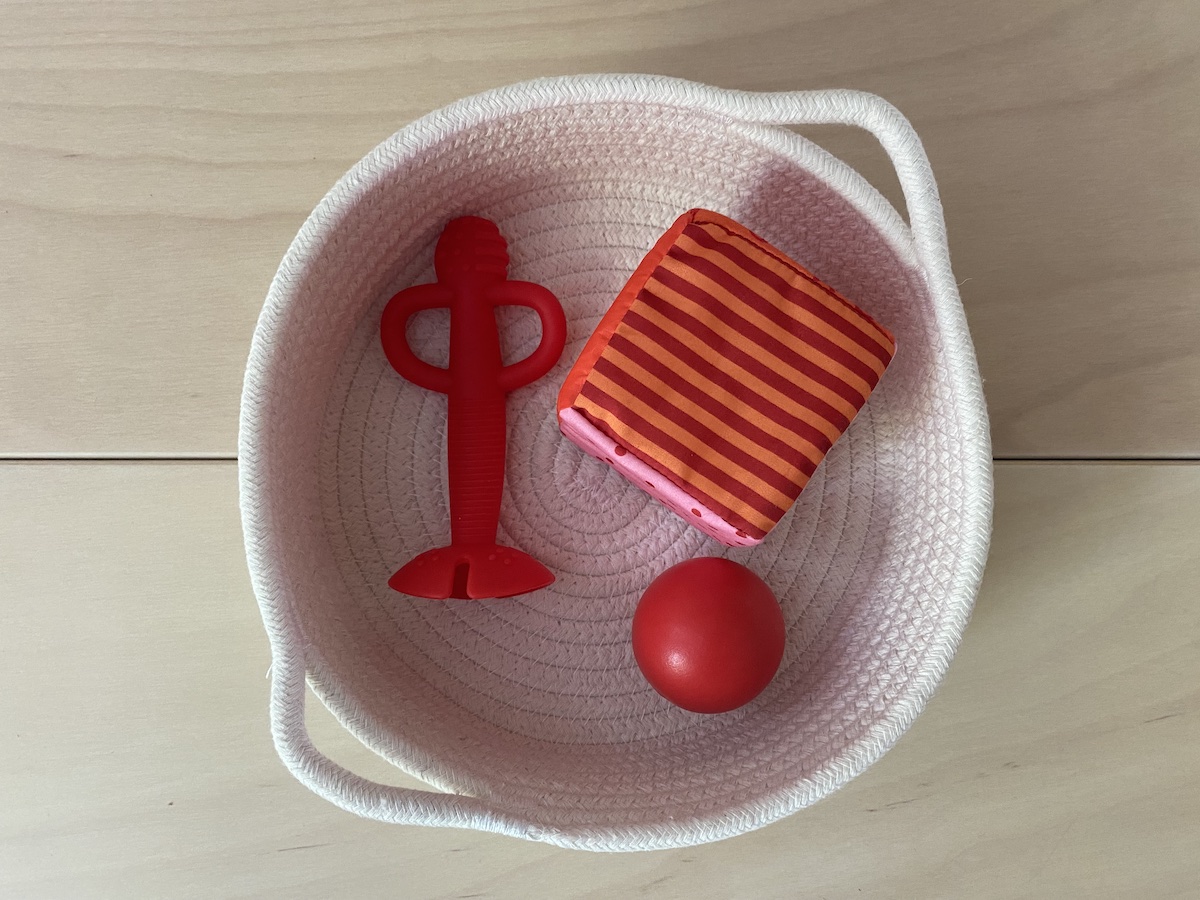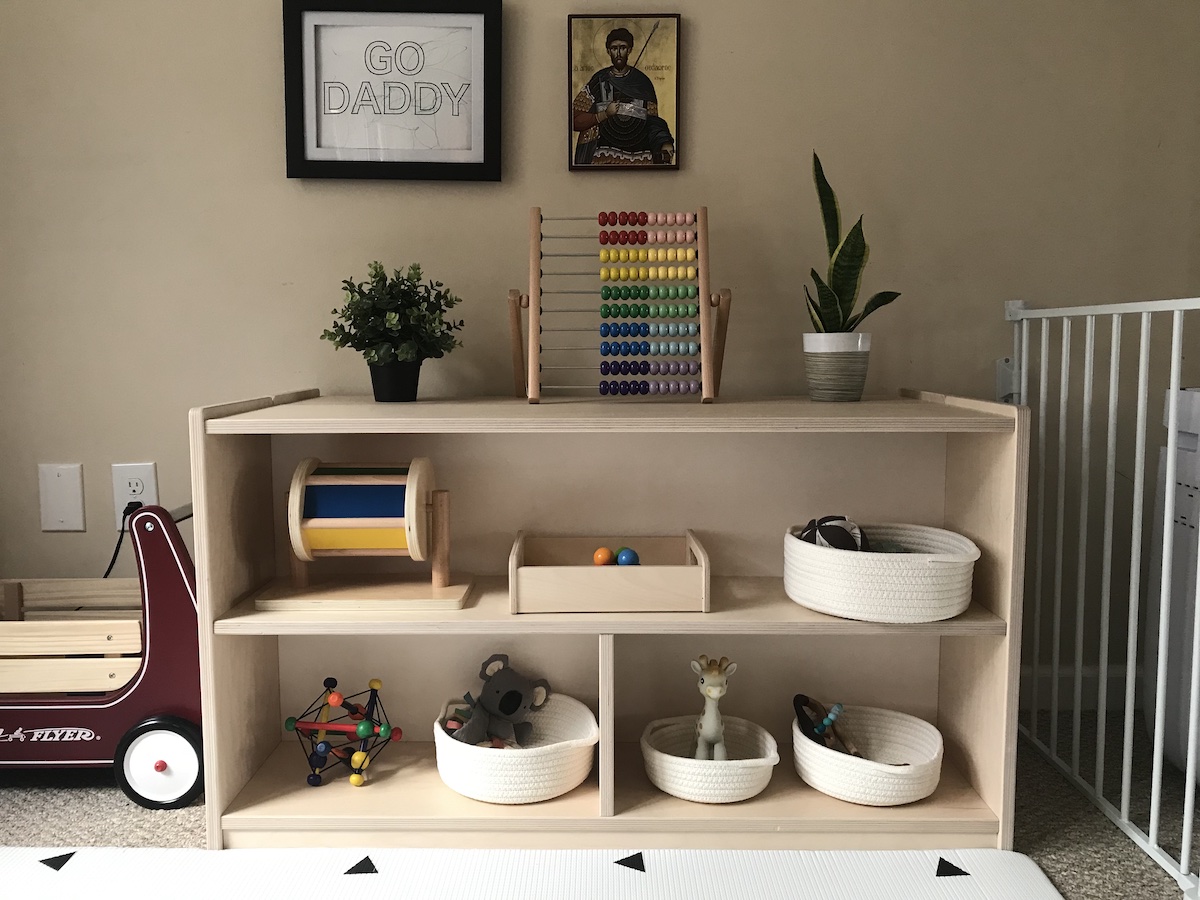
This post may contain affiliate links. This simply means that I will earn a small commission, at no cost to you, if you purchase through a link. I would and have recommended all of the products I list even without a link.
It sounds a bit crazy to think of homeschooling a 3-month-old, but why not? Yes, they have 3+ naps a day. Yes, they eat every 3 hours. But what about the time in between? When I think of school, I think of learning numbers, letters, or shapes. But really, it’s all about understanding and supporting the child’s development, which doesn’t have an age. We’ll get to the shapes later. For now, let’s focus on understanding the mind of a 3-month-old.
Inside the head of a typical 3-month old
Remember, the milestones listed below are for the average kid. If you’re concerned, talk to your pediatrician.
Recently, the world became bigger. Now, you’re more alert. You follow objects with your eyes and turn your head toward familiar voices, even if you can’t see the person. Your depth perception is just beginning to form. When you reach for a toy, you may be able to hit it or even grab it, which delights you. You discovered your hands and feet and constantly put your fingers in your mouth. In fact, you’ll try to put anything handed to you in your mouth. You can’t move much on your own yet, but you hold your head and chest up during tummy time and you’re trying to figure out how to roll over. You also love “talking”. There are no words yet, but you seem to understand the back and forth of a conversation and enjoy it.
Fine motor milestones
- Reaches for and grasps objects
- Holds and shakes a rattle
- Easily brings hands and objects to the mouth
Gross motor milestones
- Kicks, so much kicking
- Starts to roll over
- During tummy time, the head and chest remain up
Cognitive milestones
- Excited to be picked up or to eat
- Repeats activities over and over again
- Finds a partially hidden object
- Observes hands and toys in front of the eyes
Language milestones
- Begins to laugh or chuckle
- Makes sounds
- Responds when spoken to
The right activities for a 3-month old
The key to learning at this age comes from the environment. A 3-month-old can’t move much, so it’s our job to put them in the right places and interact with them. We are their teachers. Here are some of our favorite activities for the month.
1. Morning tummy time conversations
Our mornings start with feeding with Mom and then tummy time on Dad’s chest. We are slow risers. That whole thing about babies waking at 6 am is not for us, but mornings are when the little guy is the most talkative. We use this to our advantage. By combining tummy time with conversations, we strengthen the neck and shoulders, improve language, and enhance connection. As a bonus, we try to do this skin-to-skin to get all of the benefits.
2. Music time
Music is our favorite auditory sensory activity. Because we use vinyl, there’s a bonus visual sensory experience of the spinning disc. We vary the type of music, but electronic and heavy metal are our favorites. Classical was a failure. The constant changes in volume were upsetting. Of course, every child is different. I wonder what will be your child’s favorite genre.
3. Reaching in the activity gym
The main physical milestone at 3 months is grasping objects. This is one of two ways we encourage this. Using the Lovevery activity gym, we can encourage reaching and making contact with the objects. The crinkly fabric is our favorite, but it tends to be the hardest to grasp, so we added a wooden ring attached to some shiny ribbon as an easier version. Of course, once the baby can grab the objects, he wants to bring them to his mouth, which leads to our next grasping exercise.
4. Playing with light-weight toys
Babies and rattles. Before becoming a mom, that’s what I thought babies wanted to play with. It turns out 3 months old is about the earliest they become interested in them. We love this traditional wooden ring rattle and this twisting caterpillar because they are small enough to fit in a 3-month-old’s hand as well as be brought to the mouth. Both are made out of wood, so I felt safe letting him suck on them (and likely eventually chew on them.)
5. Even more tummy time

Yep, tummy time is on here twice. That’s because of how important it is for building the strength necessary to sit and crawl. We still use the black and white tummy time book from when he was a newborn, but to keep it interesting, we also added in soft blocks and a Skwish classic rattle. These two toys are very colorful and will continue to grow with him. For now, I stack the 4 blocks on top of each other. He’ll accidentally knock them down, which is the beginning of learning cause and effect. For the skwish rattle, I smoosh it and let it bounce up, which either causes laughter or just amazement. It’s similarly helping to teach cause and effect. In a few months, he’ll be able to manipulate these two toys on his own.
6. Cooking and running errands
For a 3-month-old, life is education. Whether cooking, watching us fold laundry, or heading to the grocery store or library, these are all things that excite a baby. They love the engagement with us, so we include them whenever we can. We use this time to talk about what we are doing, increasing vocabulary. For instance, when folding laundry, I will say what shirts and pants are. I may name the color or any animals I see on the outfit. I’ll specify which are mom’s clothes and which are baby’s.
7. Bedtime stories
This is the last activity of the day and one we will continue for years. Before bed, after we’re in our pjs and diaper is changed, we read two books. One from Mom and one from Dad. At 3 months, the baby is starting to reach for the pages, so it’s time to switch primarily to board books and to slow down so they can participate in reading. Depending on how tired he is, this can be a good time for some more chatting. Favorite books also get squeals, which is beyond cute.
